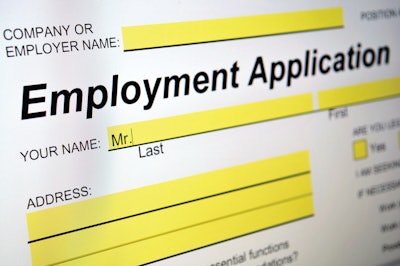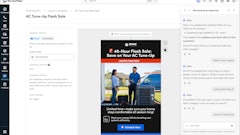
As the economy recovers, it is ever more important that contractors follow best practices and hire the best possible employees. No matter how busy you are or how desperately you need a new body on a jobsite, you should always go through the basic steps of the hiring process, especially the employment application.
A proper employment application will ask the questions and get the answers you really need, e.g., contact information, experience, education (if required), basic background information, references, etc. Perhaps more importantly, the application will have legal disclaimers that protect you and your company. For example, the disclaimer language should affirmatively state that employment will be “at-will;” that there will be a background check, drug test, credit check and/or motor vehicle record check; that lying on the application or hiding material information will result in termination; that an arbitration agreement or jury waiver provision applies to any disputes; as well as required legal disclaimers such as “Equal Employment Opportunity” Employer.
Click here to download a generic employment application you can customize for your company.
Make certain the applicant has signed the application. If not, hand it back. You should insist the application be signed so you can prove that the applicant — and perhaps later, employee — was aware of the legal language contained in the disclaimer portion of your application. You also want the applicant to acknowledge in writing that he or she is telling the truth on the application.
Examine the application carefully. Look for gaps in employment. While the economy has put people out of work, individuals with frequent and recurring gaps in employment are probably LUZIRS (Lazy, Undisciplined, Zero-interest, Irresponsible, Rude, Slackers). Ideally, your application specifically asks for an explanation for any gaps in employment. Look at this carefully. Does it indicate victim-like reasons for being out of work? If so, beware.
The prior employment section of the application is also important. Look for a progression of diminishing responsibilities or gradually decreasing pay. These suggest an individual turned out to be less responsible or less competent than expected.
You should also look for vague, unspecified reasons for leaving a job. Be wary of these classic reasons: “Disagreed with policy” [really means fired for rules violation]; “Personality conflict” [means couldn’t get along with co-workers, supervisor, or customers]; “Poor working conditions.” [code for someone was fired for poor performance]; “Mutual agreement” [management found out s/he was one of the LUZIRS].
There are a few other things that should raise suspicion. Lots of scratch-outs on the application suggest the applicant is making things up. Lack of references, toll-free numbers for phone numbers, or post office boxes instead of addresses should also catch your attention. Although it is never a certainty, someone with a toll-free phone number and a post office box as an address may well be working for the government in a facility more commonly known as a prison.
Look for incomplete or blank responses, as these signal a potential problem. If your application asks about criminal convictions [it should], and the applicant doesn’t answer, then guess what that means. There probably is a gap in employment in there, too. If the applicant’s answer is “No” to each request to contact a prior employer, odds are the applicant is hiding something. While it might be appropriate for an applicant to not want you to contact a current employer, previous employers should be fair game for reference checking.
Don’t ever accept a resume in lieu of a complete employment application. Don’t accept entries on the application stating “See resume.” Why? Well, consider who decided what questions to answer on a resume. In contrast to a well-drafted employment application, a resume is the applicant’s spin on his or her background and qualifications. Statistics show that nearly half of all resumes contain some material misrepresentation or outright an lie. Because LUZIRS are generally lazy, they frequently put “See resume” on their employment application.
If you follow these simple steps to using the application effectively, you will hire better employees and become more profitable over time.




















